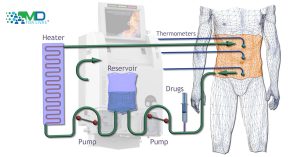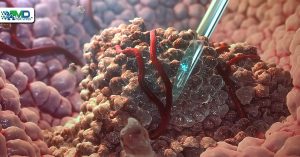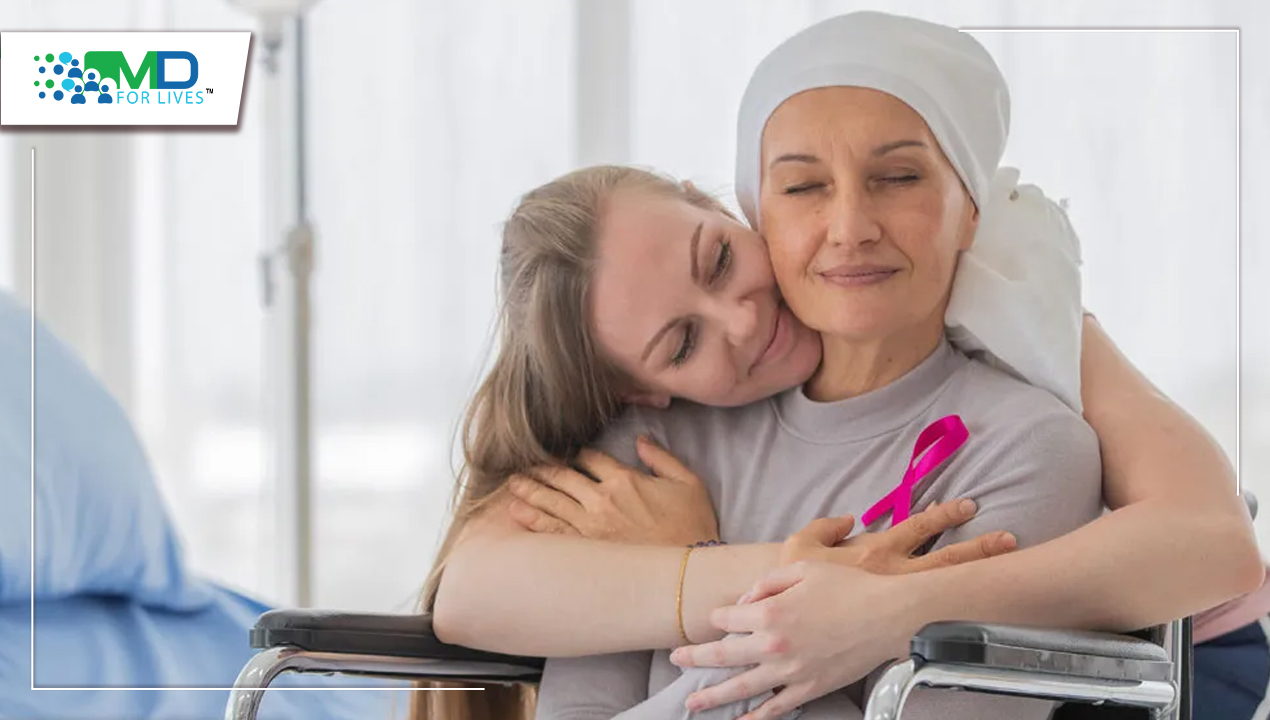Because most chemotherapy drugs are quite toxic, doctors and patients need to carefully balance the risks and benefits of each treatment. To avoid dangerous toxicity, many of these drugs must be given in limited doses or a limited number of times, which can also limit their effectiveness. Targeted cancer therapy includes several strategies that try to get around these limitations.
What is targeted cancer therapy?
“Targeted” implies a treatment designed to maximally impact cancer cells, like an arrow aimed at a target, while causing much less harm to other tissues.
Side effects of therapy for cancer depend on the agent but can include gastrointestinal distress and diarrhea, a weakened immune system, nerve damage and pain, easy bruising and bleeding, rashes, and other effects. Many of these side effects occur because traditional chemotherapy attacks all rapidly dividing cells, including cancerous and normal cells.


Hyperthermic chemotherapy can also be used intratumorally. For example, injection of cisplatin heated between 40 and 45°C into tumors has been investigated as a palliative treatment for peripheral non-small cell lung cancer.6 In a small study, patients treated with intratumoral cisplatin along with systemic chemotherapy had increased survival when compared with the group given systemic chemotherapy alone.6 Intratumoral injection has also been investigated to relieve malignant airway obstruction in NSCLC.7
 Other forms of intratumoral chemotherapy are being studied in mice.8
New strategies in targeted chancer therapy
Chemical targeting using “click” chemistry – a group of techniques involving two partner molecules that are chemically reactive react only with each other- is a new approach under investigation. Tests in mice showed that doxorubicin, a low therapeutic index drug with severe side effects, could be tolerated at a cumulative dose more than fivefold higher when administered using a “click” chemistry method.10
A project currently in Phase 1 clinical trials involves an intratumoral injection with a biopolymer containing one of the partner molecules. Then, the patient is infused with the toxic chemotherapy drug doxorubicin in an inactive form, linked to the other partner molecule.4,9,10 A “click” reaction between the partners occurs, freeing and activating the drug within the tumor.4,9,10 If these strategies move to later stages of clinical development, they could help patients get more benefit from their chemotherapy with fewer side effects.1,4
References
Other forms of intratumoral chemotherapy are being studied in mice.8
New strategies in targeted chancer therapy
Chemical targeting using “click” chemistry – a group of techniques involving two partner molecules that are chemically reactive react only with each other- is a new approach under investigation. Tests in mice showed that doxorubicin, a low therapeutic index drug with severe side effects, could be tolerated at a cumulative dose more than fivefold higher when administered using a “click” chemistry method.10
A project currently in Phase 1 clinical trials involves an intratumoral injection with a biopolymer containing one of the partner molecules. Then, the patient is infused with the toxic chemotherapy drug doxorubicin in an inactive form, linked to the other partner molecule.4,9,10 A “click” reaction between the partners occurs, freeing and activating the drug within the tumor.4,9,10 If these strategies move to later stages of clinical development, they could help patients get more benefit from their chemotherapy with fewer side effects.1,4
References
- https://www.hcplive.com/view/a_brief_review_1009
- https://www.cancer.gov/about-cancer/treatment/types/targeted-therapies/targeted-therapies-fact-sheet
- https://www.medicalnewstoday.com/articles/323485#rare-side-effects
- https://www.discovermagazine.com/health/honeymoon-phase-chemical-partners-deliver-a-toxic-drug-to-tumors
- https://jamanetwork.com/journals/jamasurgery/article-abstract/2735967
- https://ejb.springeropen.com/articles/10.1186/s43168-020-00018-x
- https://pmj.bmj.com/content/98/1156/104
- https://pubs.acs.org/doi/10.1021/acs.molpharmaceut.0c00781
- https://clinicaltrials.gov/ct2/show/NCT04106492
- https://onlinelibrary.wiley.com/doi/epdf/10.1002/adtp.202000243

MDForLives is a vibrant community of healthcare professionals and patients dedicated to shaping the future of healthcare. We provide valuable global insights to healthcare companies through online surveys, interviews, and discussion forums.





